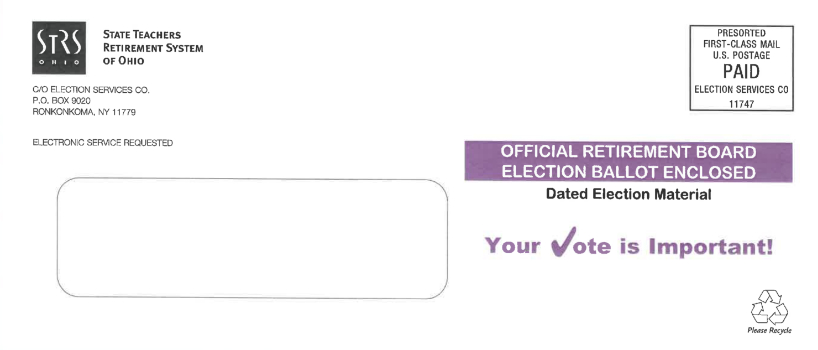An Ohio teachers association is lashing out at the Ohio State Teachers’ Retirement System and its investment staff after years of no cost-of-living adjustments, alleging that poor investment performance, hidden costs and performance bonuses for staff are partially to blame.
Executives at the Columbus- based retirement system say that reports of underperformance are false, and that the emphasis on internal management saved well over $100 million in costs and fees in the last year alone — even with performance-based bonuses for staff.
The teachers, represented by advocacy organization the Ohio Retirement for Teachers Association, has launched an aggressive social media campaign and a class-action lawsuit lambasting the system’s investment staff for its compensation structure and investment performance.
The root of the conflict is the retirement system’s board voting to eliminate the COLA every year between 2017 and 2022, after previously cutting the COLA to 2% from 3% for five years beginning in 2012.
Prior to 2012, retirees received an automatic COLA of 3%. It was that year when then-Gov. John Kasich signed into law five pension reform bills each covering one of the state’s five retirement systems.
For the Ohio State Teachers’ Retirement System, employee contributions were raised to 14% from 10% and workers gave its board the authority to change the cost-of-living adjustment annually from the previous automatic 3% annual increase. Notably, the employer contribution remained unchanged at 14%, another source of angst among teachers.
Following stock market declines in 2008 and 2009, the amortization period for the retirement system’s unfunded pension liabilities under the STRS defined benefit plan became infinite, according to legislation passed and now on the books.
As a result, the law modified the COLA, noting in the uncodified section that modifying future COLAs was “the most effective means for restoring the long-term solvency” of the defined benefit plan.
STRS spokesman Dan Minnich said in an email the system has calculated that, without the 2012 plan design changes, the system’s funding ratio as of June 30 would have been 49.6%, down from 57.6% 10 years earlier.
Instead, the spokesman said, the funding ratio was 78.9% as of June 30.
Angry over no COLAs
Years of no cost-of-living increases has resulted in a groundswell of anger among retirees — despite the board restoring the 3% COLA for a single year for the fiscal year 2023.
William Neville, executive director of the $88.2 billion STRS, said in a phone interview that while the COLA was effective only for the one year, there may be light at the end of the tunnel for participants because the system’s funded status has improved.
“The board last month (April) looked at what we are calling a sustainable benefit enhancement plan,” Mr. Neville said, “and the board is looking with its outside actuary Cheiron to determine if benefit enhancements and benefit improvements are possible.”
That’s little solace, however, to angry retirees who expected a COLA every year for the rest of their lives.
In 2021, the Ohio Retirement for Teachers Association funneled its anger into a forensic investigation, paying $75,000 to a firm called Benchmark Financial Services Inc. to conduct a “fiduciary investigation” of the retirement system.
That same year, the Teachers Association, with the assistance of Benchmark, filed a still-pending class-action lawsuit for the system to release unredacted reports related to the pension fund’s alternative investments. The class-action suit was spurred on in part by the forensic investigation, which alleges the plan’s investment returns have massively underperformed relative its return objectives across all periods due in part to those fees.
Matthew E. Worley, STRS chief investment officer, says this is not correct.
According to audited return information, the pension fund returned a net -3.7% for the fiscal year ended June 30, above its policy benchmark return of -5.6%, and has posted an annualized net return of 9.2% for the 10 years ended June 30, above the annualized benchmark return of 8.9%, and well above the system’s current assumed rate of return of 7%.
Blended benchmark
Plan trustees say they use a blended benchmark established by investment staff and voted on by the board. And each asset class benchmark is blended using different indexes to reflect the different strategies within asset classes.
“Our absolute performance is in the top decile over multiple periods, and we’ve been able to outperform the benchmark over those periods as well,” Mr. Worley said in a phone interview.
“In terms of an investment philosophy, I’d say diversification is really at the top of our list,” Mr. Worley said. “It’s always risk-adjusted returns, maximum returns with a prudent level of risk. We believe we’re paid or compensated for taking risk premia and illiquidity premiums. We’re long-term investors. It gives us a certain advantage to committing to long-term strategies.”
The pension fund also has the advantage of internally managing about 65% of its $88.2 billion in assets, Mr. Worley said.
The system’s target allocation is 26% domestic equities, 22% international and global equities, 17% core fixed income, 10% each opportunistic/diversified investments and real estate, 9% private equity, 5% liquid Treasuries and 1% liquidity reserves.
Mr. Worley said the vast majority of the domestic equity and fixed-income asset classes are managed internally, international equities is split about 50/50 between external and internal management, and even real estate is managed mostly internally.
“Real estate, we look different than most people,” Mr. Worley said. “We have a captive real estate program internally we’ve had over 40 years, so we have acquisition officers, property managers, properties across the United States.”
Mr. Worley said only about 13% of the overall real estate portfolio is managed externally.
Internal management savings
During the year ended Dec. 31, 2021, the most recent data available, the system saved a total of $134 million by internally managing almost two-thirds of its total assets, according to an analysis by CEM Benchmarking.
However, saving millions by not paying external manager fees is little solace for Robin Rayfield, executive director of the Ohio Retirement for Teachers Association.
“The big issue that triggers all the angst and anger and frustration is our pension system employees get 125% of their compensation through a bonus mechanism,” Mr. Rayfield said in a phone interview. “It’s interesting to know they’ve never not got their bonus. You (shouldn’t) get a bonus when you lose money.”
Mr. Rayfield doesn’t accept the explanation from investment staff that STRS captured investment returns well above the major equity and fixed-income indexes, saying the returns were really much worse because they had not valued the alternatives portfolios.
STRS alternatives include private equity, opportunistic/diversified investments, mostly debt-related, private credit and distressed debt.
However, according to STRS, the overall return was unchanged following that valuation process.
In addition, teachers in the STRS plan are upset about the investment team awarding themselves bonuses — despite not paying COLAs to the beneficiaries of the plan.
The bonus structure is also based on five-year performance in addition to single-year performance, STRS’ Mr. Minnich said in an email.
The proposed budget for bonuses for fiscal 2023 totals $11.1 million, up from $8.5 million the prior year.
While the teachers’ association blames the compensation structure in part for the lack of a COLA, Mr. Minnich noted that the cost of the recently approved COLA for fiscal year 2023 was $1.6 billion, well above any cost of compensation.
State auditor gets involved
Even before the recent outrage over performance bonuses, the controversy got the attention of Ohio State Auditor Keith Faber.
“What happened was we got a host of complaints, including from a self-purported watchdog and others that something was going amiss with STRS,” Mr. Faber said in a phone interview.
Mr. Faber was aware of the Benchmark Financial Services report, which he said “makes conclusions based on records he doesn’t have.” Mr. Faber did note that there was enough substance in the complaints that it was worth going through a special audit, since one of the big concerns raised by Benchmark Financial Services was that they were not given records they requested.
“We don’t have the same limitations that outside agencies have,” Mr. Faber said.
Being able to request whatever documents he could, Mr. Faber said his office and an outside actuarial consultant not affiliated with any of the state retirement systems went through the various allegations, and even had multiple meetings with stakeholders to gather additional allegations.
“Ultimately, our conclusions were that we didn’t find any evidence of fraud within the system,” Mr. Faber said. “STRS could have been more transparent, that they could have communicated with their board and certainly their stakeholders in a better way.”
According to STRS’ financial reports, the alternatives investment portfolio returned a net 18.4% for the fiscal year ended June 30, above its blended benchmark return of 13.6%.
Dean Dennis, president-elect of the Ohio Retirement for Teachers Association and founder of an activist website called STRS Ohio Watchdog, said in an email that the system needs to be reformed by eliminating alternative investments, moving away from active management and moving primarily to index funds, although he noted they shouldn’t go to 100% index funds.
“It’s a constant battle to make sense of their investment costs. They balance their books by withholding promised benefits. They seem to be protecting their active management and always claim they beat the market, which we all know isn’t possible,” Mr. Dennis said.


